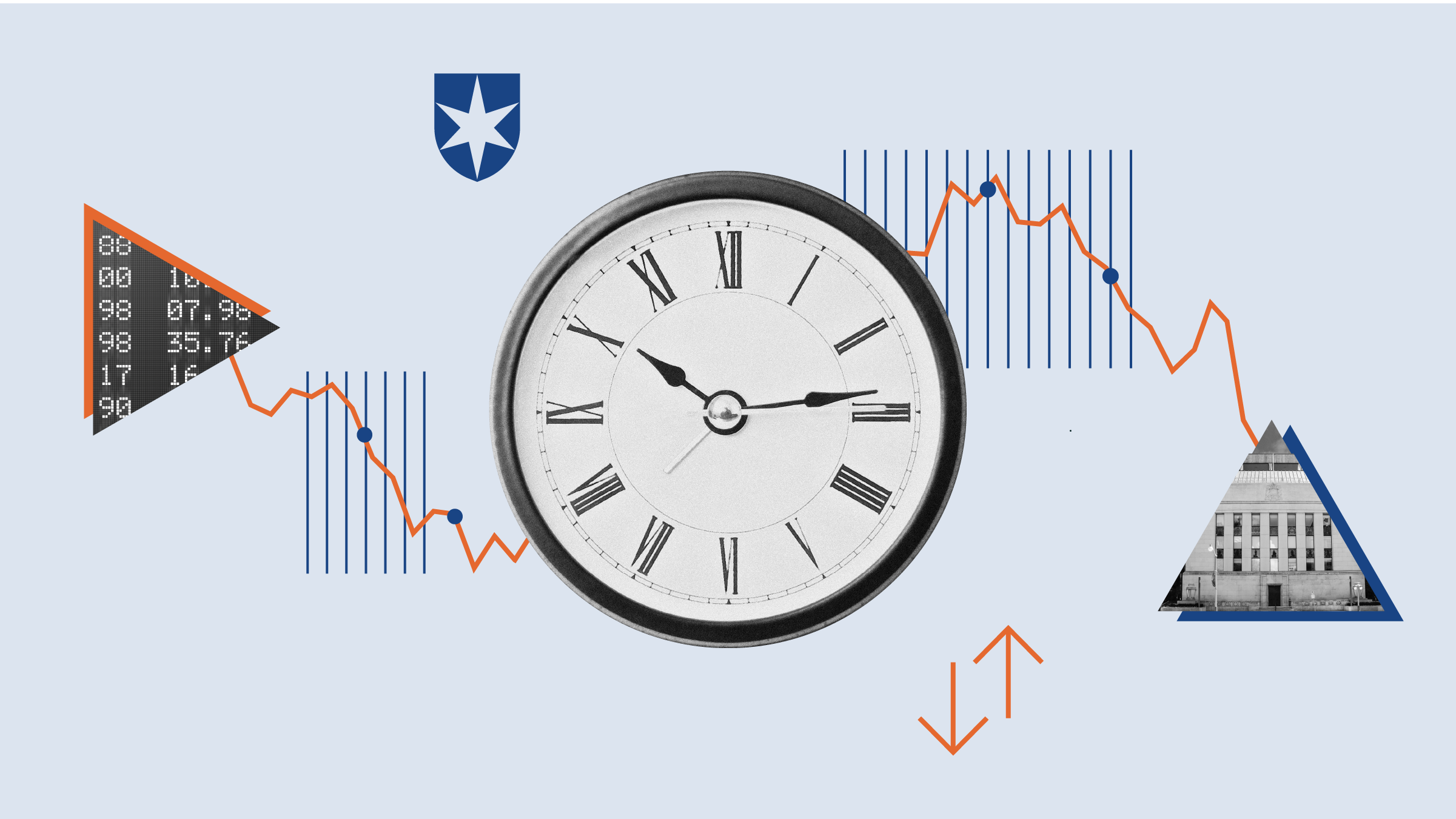:quality(80)/cloudfront-us-east-1.images.arcpublishing.com/morningstar/UZ3HRYPOGRGF3NPCGMXDQ2PIVE.png)
Investors in funds focused on real estate investment trusts took a one-two punch in recent years from the pandemic and higher interest rates. But one veteran fund manager says the outlook is now looking much brighter for these dividend-paying stocks.
Not only has the fundamental backdrop for REITs improved with interest rates coming down, but after years of poor performance, valuations also generally look attractive, says Lee Goldman, lead manager of the C$524 million 3-star rated CI Canadian REIT ETF RIT.
“For the most part, REITs are in discount territory. Obviously, they have had a strong comeback, and the REIT sector is up 11% year-to-date as measured by the benchmark S&P/TSX Capped REIT Index,” observes Goldman. “In fact, as of the middle of June, the index was down almost 10%, so we’ve seen a 20% rebound. Things are not as discounted as they were a few months ago. But we still see them as trading close to 15% discount to NAV [net asset value]. So on that measure, valuations look attractive.”
Despite the woes that have hit real estate in recent years, the landscape looks healthy, he says.
Outside of the office sector, “which has certainly seen its challenges in high vacancy rates, the fundamentals are pretty decent across the major sectors,” says Goldman. “If we go into a recession or severe economic slowdown, things could change. Apartments tend to be the most resilient, and they are the most affordable housing solution, so we are pretty confident that the fundamentals remain decent, regardless of what happens in the economy. As for retail, if sales slow very significantly that will decrease the appetite for retailers to expand,” says Goldman, noting that tenants may be less willing to pay higher rents.
Morningstar Key Stats for CI Canadian REIT ETF
- Morningstar Medalist Rating: Neutral
- Morningstar Rating: 3 stars
- Morningstar Category: Real Estate Equity
- Fund Size: C$523.7 million
- 12-Month Yield: 4.74%
Based on a measure of free cash flow generation known as adjusted funds from operations, REITs are trading at about 15 times AFFO, “and they look more fairly valued, and closer to historical norms,” says Goldmanwho has worked in the industry for over 34 years and oversees in total C$3 billion in real estate assets spread across several funds. He works alongside vice president Chris Couprie and research analyst Chris Koutsikaloudis. “There is still good value there and room to grow.”
That AFFO measure translates into a 6.6% cash flow yield, says Goldman. “The average distribution yield for REITs is around 5%, so they are not paying out everything and have a bit of a buffer. But it’s a decent yield. REITs look cheaper on a net asset value basis than AFFO, but we think they still look reasonably valued. It’s a good point of entry for investors.”
From a performance standpoint, the CI Canadian REIT ETF has risen 23.05% over the past year, roughly in line with the 22.4% gain on the average fund in the real estate equity category, leaving it in the 41st percentile for performance. The fund beat its benchmark, the S&P/TSX Capped REITs Index, by 4.37 percentage points. The fund has climbed 1.15% per year over the past three years and gained 4.76% annualized over the past five years. In contrast, the category has returned an annualized 0.6% over the last three years and 3.7% per year for the last five years.
CI Canadian REIT is also available in a mutual fund version, the 4-star-rated C$67.7 million CI Canadian REIT F, which was launched in 2010.
REIT Sector Outlook
While empty office towers capture much of the negative headlines, Goldman maintains that office buildings are a relatively small component in the REIT sector, which is highly diversified and also composed of multifamily residential and industrial complexes. “The national vacancy rate for offices is 18.5%, versus 10% prepandemic. It’s been relatively flat for the past five quarters,” says Goldman, adding that Toronto’s vacancy rate is 19%, a situation that is caused by large numbers of office workers working either from home, or partly from home, and an oversupplied market.
Looking at the benchmark S&P/TSX Capped REIT Index, Goldman notes that the single largest component consists of the retail sector at 40%. That is followed by 30% in multifamily residential, 17% industrial, and 5% offices. The index is composed of the 16 largest Canadian players by market capitalization.
Goldman remains optimistic, even as the Canadian economy is softening and unemployment is slowly on the rise. “You have to look at the three main subsectors in the market: retail, residential, and industrial. On the retail side, you can point to a weakening consumer and the issues with mortgage rollovers that will happen at higher rates and that will affect disposable income. But look at what we call ‘daily necessity’ retailers in shopping malls. The reason that they are doing well is it’s still a very strong environment. Occupancy rates are at all-time highs, and what’s pushing that is a lack of new supply. There’s no new retail built on a significant scale in the last 10 years.” Meanwhile, some retailers are expanding, and with few places to move into, some landlords have pricing power and can charge higher rents. In addition, another driver is the significant population growth in the past couple of years.
On the apartment residential side, Goldman says there is a serious shortage, which would take years to fill. “To try to build 400,000 to 500,000 units a year for the next seven years is hard to do. So it’s going to remain a very tight housing market. And even if the government curbs immigration, population growth will be around 1% a year. There is little happening in terms of new supply. The returns are not there, so you can see a pretty low response in the form of new housing. And owners of existing buildings should see strong demand, and they should have some pricing power,” says Goldman, who believes that residential REITs should see some strong earnings growth for the next few years.
“The industrial sector—which has only two names in the index—has become more of a balanced market.”
Pre-covid, Goldman observes, the industrial’s vacancy rate reached about 1% across the country and rents doubled over a five-year period. But rent growth has slowed, and the vacancy rate has picked up; over the past year, it has gone from 2% to 4%, and it may go a little higher. “But even at below 5%, it’s still a decent market for the landlords. Although rent escalation has subsided, we don’t envision a scenario where rents go down much. Similar to what I mentioned with apartments, there is such embedded growth between in-place rents and where market rents are, that these companies will still have good growth for the next couple of years and will see rent growth on the industrial side of things.”
Two Top REIT Picks
From a strategic viewpoint, Goldman and his team are running a relatively concentrated portfolio with about 34 names and are favoring stronger well-capitalized players in various sectors. By extension, they are avoiding weaker players that lack good management, good balance sheets, and attractive valuations. Currently, residential is the largest single component, at 35%, followed by retail at 25%, industrial 12%, and seniors housing and healthcare, which, taken together, account for 9% of the portfolio. There is also a very small weighting in data centers and cell phone towers.
One favorite name on the retail side is First Capital REIT FCR.UN, which owns grocery store-anchored shopping centers across the country, focused on the medium-size markets in Canada, which have a population density of around 300,000 people in a five-kilometer radius. “They had a bit too much debt, but they have done a good job of lowering debt by selling off noncore and low-yielding assets. The stock has had a good rebound, but we see further upside.”
The stock is trading at about C$18, at around 16 times AFFO, and at a 15% discount to NAV. Goldman believes the stock, which yields 4.8%, could rise to around C$22 within a year.
Another favorite is Chartwell Retirement Residences CSH.UN, the leading provider of retirement homes. “It took a big hit in the pandemic because people couldn’t move into the residences, and their costs went way up as they had to hire a lot of temporary staff. But in the last 18 months or so, the occupancy rate went 77% to 88% and management is talking about 95% by the end of next year, which is starting to look quite achievable. Meanwhile, costs have gone down, and margins have gone up. They have a lot of operating leverage. When you go from 85% occupancy to 95%, you are really not adding much in terms of cost and more money goes to the bottom line.”
Chartwell is trading at C$15.50, or 19 times AFFO, and is very close to its NAV, says Goldman, who has no stated target. The stock is yielding 4%.
Looking ahead, Goldman is upbeat, pointing to the sector’s dividend yield that varies around 4%-5%. “We expect growth [in capital appreciation] to be 3%-4% next year. So, if all else being equal, and multiples don’t change, our best case is that real estate returns will be around 7%-8%. Things do move around in the course of a year, but that’s a realistic way to look at the real estate universe.”




















